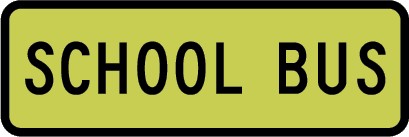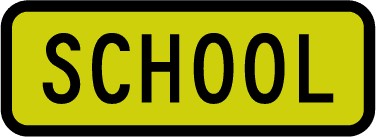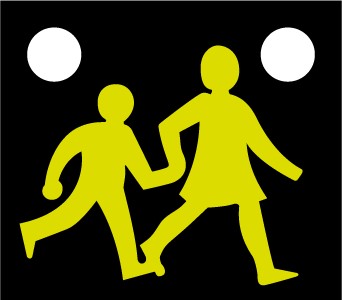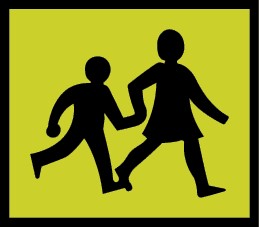Information in this section is likely to have greater application for rural bus stops; in urban areas, school bus stops should generally be built as standard bus stops.
Guidelines for information on school bus routes and stops
The Ministry of Education agents are responsible for checking routes used by school buses. The guideline describes:
The agents are encouraged to discuss the routes and bus stops with the bus drivers and operators when existing or proposed stops are assessed for risk and, where stops do not adequately meet the guidelines, seek alternative locations. Where alternatives cannot be found or there is a possibility some minor work might remove the problem, it is recommended the road controlling authority be approached.
Further information in relation to school bus safety:
Table 16‑1: Signs for school bus stops and routes (road and vehicle mounted)
|
Sign code |
Example |
Description/use |
|---|---|---|
|
W16-6 School bus symbol W16-6.1 School bus route, or W16-6.2 School bus turns |
|
A W16-6 sign combination consists of a ‘Children alighting from bus’ symbol displayed on a standard diamond sign plate and a supplementary sign W16-6.1 School bus route or W16-6.2 School bus turns. W16-6, W16-6.1 and W16-6.2 signs may be warranted on roads in rural areas where in the opinion of the RCA, roadway conditions and the presence of school buses could create a hazard, in particular where the road is narrow and winding and the buses stop to allow children to board and alight. The signs should not be installed in urban areas. The W16-6 and W16-6.2 School bus turns combination should be installed at the terminal points of a school bus route. For sign location, see note 1. |
|
W17-1.1 School bus – ‘school bus’ |
 |
Vehicle mounted sign. For sign location, see notes 2 and 3. |
|
W17-1.2 School bus – ‘school’ |
 |
Vehicle mounted sign. For sign location, see notes 2 and 3. |
|
W17-1.3 School bus – ‘symbolic children’ plus flashing lights |
 |
Vehicle mounted sign – ‘Symbolic children’ plus flashing lights. Flashing lights must be yellow for signs mounted at the rear of the bus or may be yellow or white for signs mounted at the front of the bus. For sign location, see notes 2 and 3. |
|
W17-1.4 School bus – ‘symbolic children’ |
 |
Vehicle mounted sign – ‘Symbolic children’. For sign location, see notes 2 and 3. |
Table 16‑1 note: